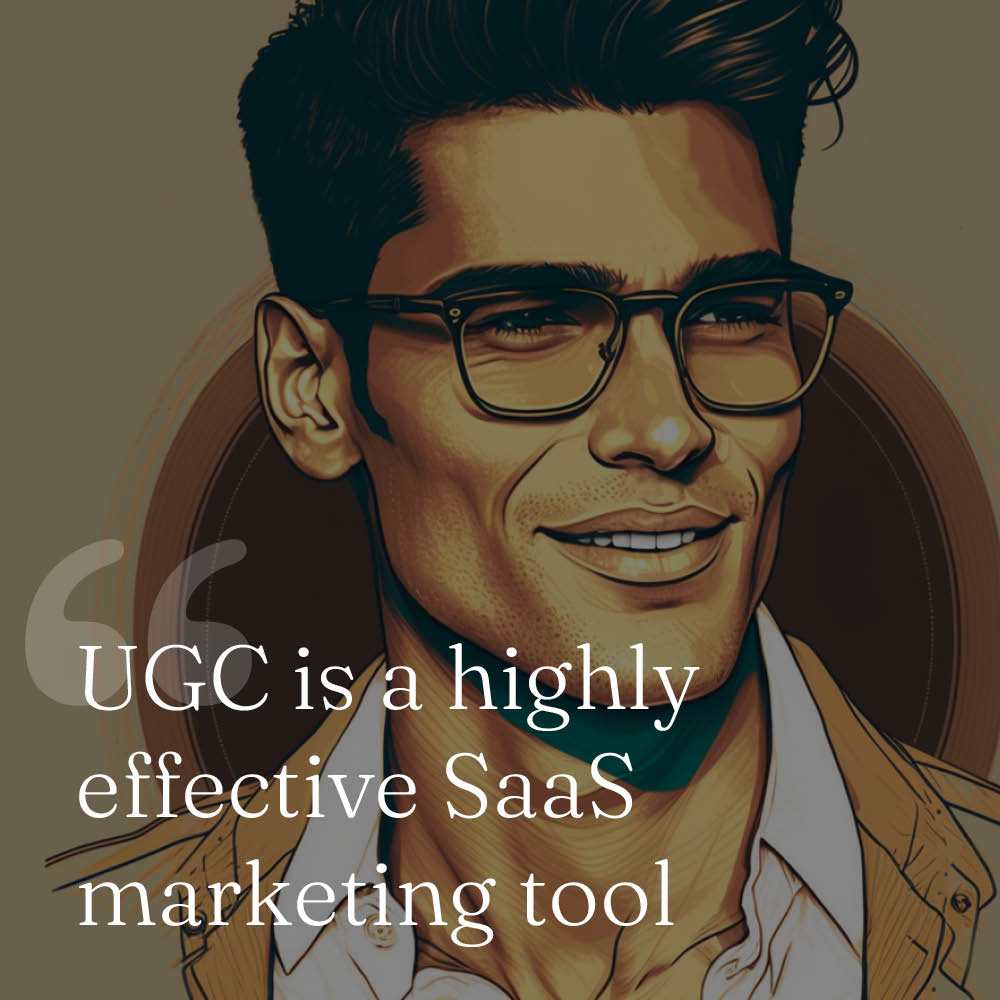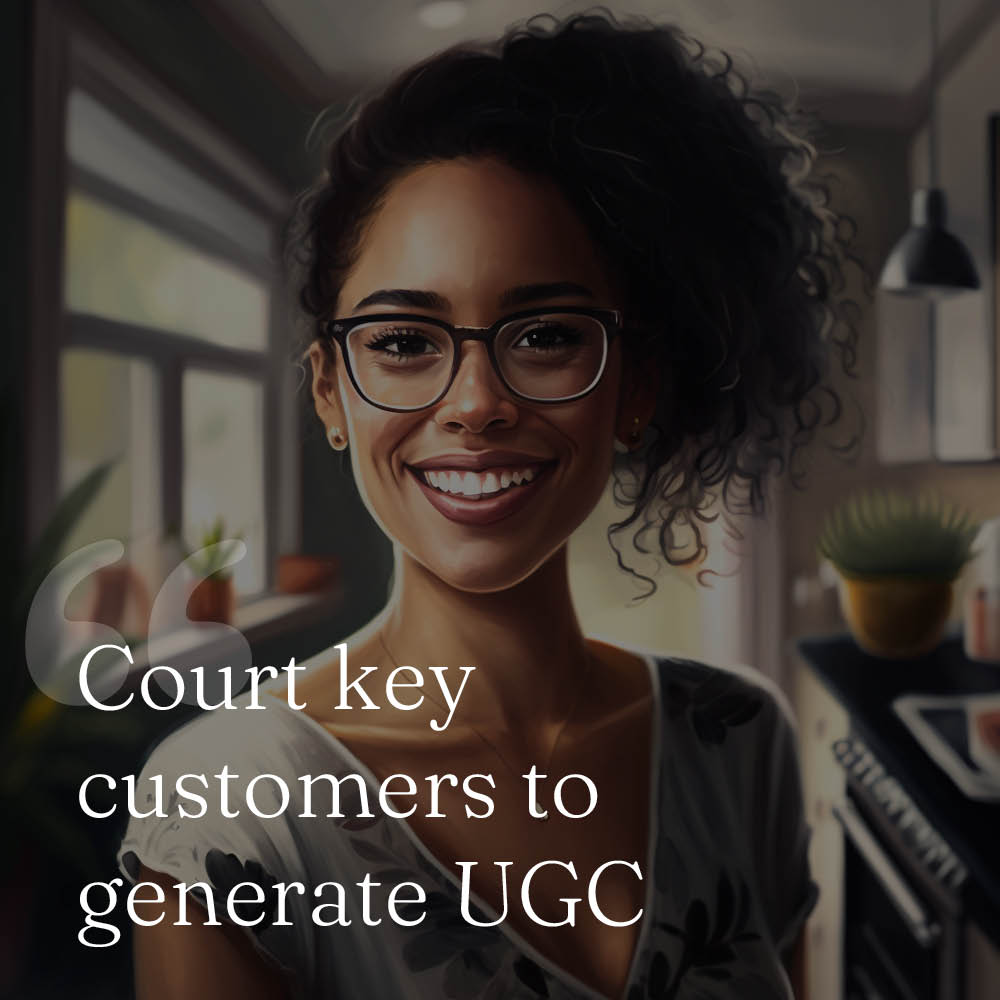When people interact with user-generated content on your website, it can boost your conversion rates by up to 100.6%.
That’s a whopping 2X increase in conversions, all from curating content already created by your user base.
Sadly, there’s little information to be found online about incorporating user-generated content in SaaS.
That’s even though many SaaS brands excel at UGC, with some amazing results to show for it.
In this UGC guide for SaaS brands, you’ll learn a step-by-step plan for sourcing and curating content from your user base, along with real-life examples to show you how it’s done.
User-generated content (UGC): A SaaS growth lever?
User-generated content, or UGC, is any type of content your user base (participants or customers) creates.
This content can span different platforms, such as screenshots, video tutorials, blog posts, forum comments, and reviews.
UGC contains an honest representation of a product or service from your user’s perspective, making it a highly effective marketing tool.
It helps you form an authentic connection with your target audience, building trust and credibility with your company.
You can use UGC to increase brand awareness, strengthen customer relationships, boost conversions, and improve search rankings for your SaaS startup.

Ways to implement UGC into your SaaS marketing campaign
User-generated content shows real-life examples of how your SaaS product is being used. Here’s how the best brands do it:
1. Host a UGC contest
Run a UGC competition, such as an Instagram or Twitter hashtag campaign or a video challenge, to encourage your users to create and share content about your SaaS product.
Offer prizes or discounts to those who participate. Examples include:
- Spotify’s #SpotifyWrapped
- Netflix’s #StreamTeam
- Salesforce’s #BeABuilder
2. Create a customer gallery
Create a curated online gallery of stories involving your customers and your SaaS product. Share it on your website, blog, and social media platforms.
Examples include Automattic’s WordPress Showcase and Xero’s Customer Stories.
3. Leverage user reviews
User review sites such as G2, Capterra, and TrustRadius show potential customers the value of your product. Add snippets of these reviews to your landing page and email campaigns.
A few examples worth looking at are:
4. Create an Ambassador Program
Build relationships with key customers who can be your brand advocates and ask them to create content about your product.
Then, showcase these affiliates on your marketing channels to encourage participation from other users. Two great examples of this are Asana’s Ambassador program and Canva’s Affiliate program.

5. Host community Q&As
Organize interactive, real-time Q&A sessions with your customer base and invite them to ask questions about your product and provide feedback.
Then, livestream the sessions on social media, repurpose them into an online forum, or conduct live webinar series. Examples include:
- Intercom’s CX for Growth Webinars
- ConvertKit’s Q&A Forum
- Quickbooks’ US Community
A step-by-step framework for implementing UGC in SaaS
Successful UGC campaigns require creating a detailed action plan that catalogs your existing resources, recommends new ways to repurpose them, suggests ideas to source fresh content, and provides guidelines for tracking your ongoing progress.
Here’s how:
1. Establish UGC objectives
Identify the key goals for your UGC marketing efforts, such as increasing brand awareness, strengthening customer relationships, boosting conversions, improving search rankings, and more.
2. Research your audience
Research the users who interact with your UGC. This helps you understand their preferences and tailor your strategies to them.
3. Audit existing content
Analyze the content already produced by your user base. That way, you can leverage the existing content first and adjust your strategy accordingly.
4. Launch UGC campaigns
Use contests and incentives to promote UGC participation, encouraging users to create and share content about your product.

5. Aggregate new content
Gather user-generated content from different sources and store it in a central hub. This step helps streamline the content curation process.
6. Curate your UGC
Review all user-generated content submissions and select the ones that closely match your brand’s messaging and goals.
7. Identify brand influencers
Find users who consistently create and share high-quality content. Develop relationships with them and encourage them to become brand advocates.
8. Promote the UGC
Share your user-generated content across various channels, including websites, blogs, and social media platforms.
9. Measure and analyze
Track the performance of your UGC campaigns and prioritize content types that have the most impact on your conversion rates.
The best UGC examples from leading SaaS brands
Let’s take a look at some of the best UGC campaigns in the history of SaaS marketing to see what made them so successful:
Squarespace Circle
Squarespace Circle is a program designed to support the platform’s leading creators by offering them various benefits and special training sessions to master website design.
Squarespace regularly partners with its Circle members to highlight their success stories within its own platform.
Why it worked: Every success story works like a de-facto endorsement for Squarespace’s platform, showcasing its top features not only as a website builder but as a community of creators who used it to build a successful career.
HubSpot’s The Growth Show
The Growth Show is a podcast series from HubSpot that explores the inspiring journeys of startups and scale-ups.
Listeners hear stories from entrepreneurs, executives, and experts about their growth strategies.
Why it worked: HubSpot’s stories provide inspiration and actionable strategies that listeners can use.
It was a hit because it was relatable to the target audience and solidified the company’s image as an authority on growth marketing.
YouTube’s #GrowWithGoogle
YouTube’s #GrowWithGoogle campaign was designed to help small businesses, entrepreneurs, and developers use Google’s products and services to grow their businesses.
The video series featured content from real-life entrepreneurs who shared their stories and success tips.
Why it worked: #GrowWithGoogle demonstrated the success of small businesses using Google’s products and services to grow their companies.
It gave the audience real-life stories and tips on improving their businesses, generating a sense of trust and reliability in Google’s products.
SaaS UGC is the key to unlocking community-led growth
Community-led growth places your target audience at the center of your marketing efforts.
It involves getting feedback to produce better content, products, and events for a specific audience by interacting with them regularly.
User-generated content unlocks community-led growth for SaaS companies. It helps brands connect with their customers on a deeper level, building trust and loyalty with their target audience.
UGC encourages user engagement, provides insight into customer interests, and ultimately increases conversions.
Is user-generated content part of your SaaS growth strategy in 2023? If not, it might be time to consider it seriously.

Ritoban Mukherjee is the founder and CEO of Nutgraf, a content marketing agency.





